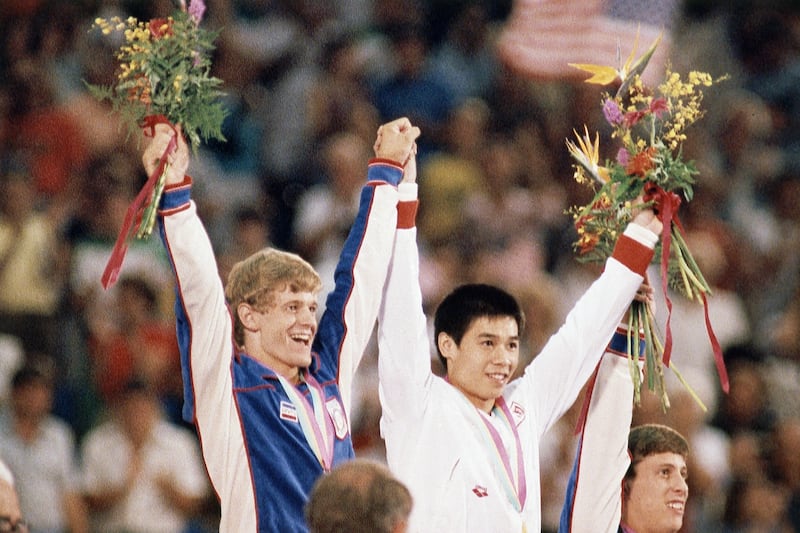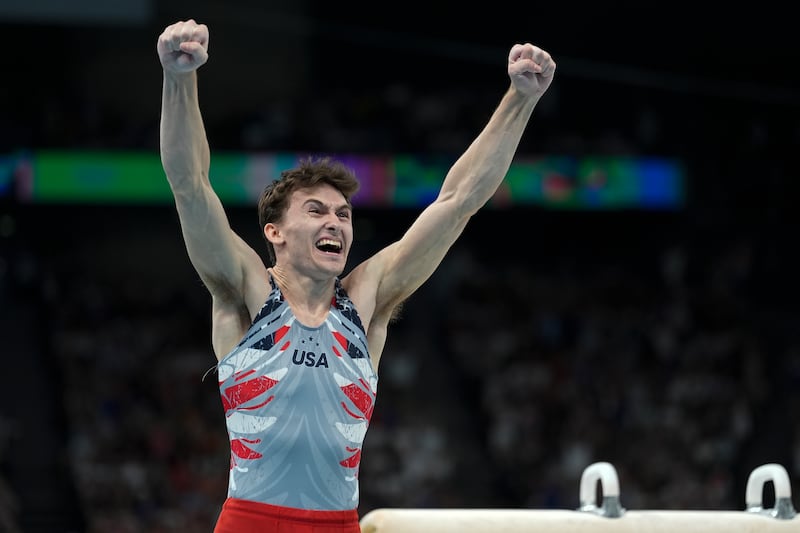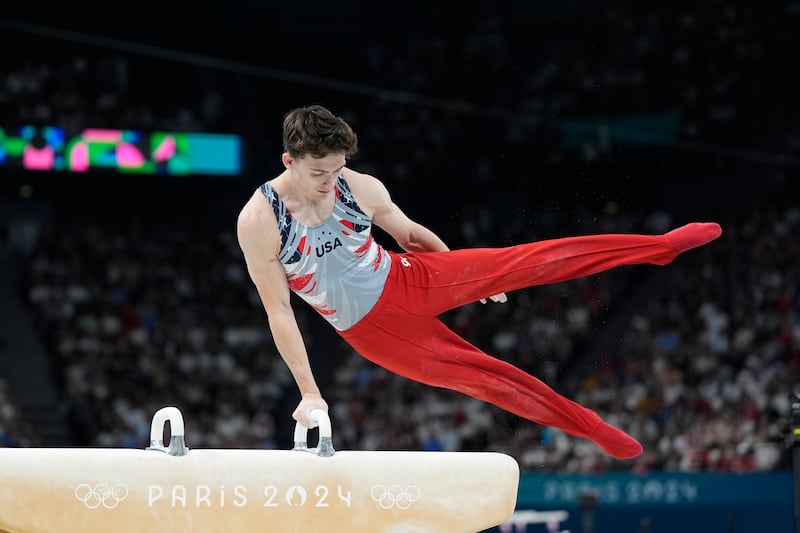Pommel horse guy. Mr. Pommel Horse. Clark Kent on a pommel horse.
By now, you’ve probably heard about Stephen Nedoroscik. After a charismatic turn on pommel horse that led Team USA to its first team medal since 2008, he’s everywhere. He’s on social media. He’s in the news. He’s got memes.
And he’s also got the attention of some fellow athletes, including some big names from the history of USA Gymnastics.
Peter Vidmar on Stephen Nedoroscik: ‘He’s amazing’
Peter Vidmar is a former Olympic gymnast and three-time medalist. He competed in the 1984 Olympics in Los Angeles, winning gold in team all-around, gold on pommel horse (where he scored a perfect 10), and silver in individual all-around.

After retiring from competing, Vidmar stayed involved with the Olympics and gymnastics. He’s attended 10 Olympic games as a journalist or a spokesperson. He also served as the chairman of the U.S. Gymnastics Board of Directors from 2008 to 2015 before stepping down to serve a mission for The Church of Jesus Christ of Latter-day Saints.
And these days, even though he’s not as involved as he used to be, he still enjoys watching the Games. Including Nedoroscik.
“He’s a joy to watch. He’s amazing,” Vidmar told the Deseret News in a phone interview.
“I’ve watched him over the last few years. His technique, his artistry on the pommel horse is amazing. He’s one of the handful that have the chance to win a gold medal ... and I’m hoping he can pull it off.”

Competing with eye conditions
One of the most impressive things about Nedoroscik is that he is competing at such a high level with not one, but two eye conditions. According to Healthline, Nedoroscik has strabismus and coloboma.
Strabismus, also known as crossed eyes, is when the eyes point in different directions. Coloboma is a condition where part of the eye tissue is missing and it can cause vision loss and sensitivity to light.
When asked about his thoughts on Nedoroscik competing with these conditions, Vidmar remarked on how impressed he was.
“I didn’t know much about his specific condition until I read up on it the last couple days, and I just admire him even more for not just being able to overcome that but being able to use that for his benefit, because he does it based on feel,” Vidmar said. “I marvel at that. Yes, your eyesight in kind of important in gymnastics, and yet he says he does a lot of it by feel.
“I think that is a credit to his technique. The fact that he can sense, and I think that is something that is innate in good gymnasts, is that they sense where their body is. They have the spacial awareness. And because of that they can make those micro adjustments in fractions of a second to keep them on track in their routine. And he seems to have mastered that.”

An unconventional athlete. And that’s great
Every Olympic Games has its heroes. In past Games, it’s been athletic giants like Michael Phelps or Usain Bolt. This year, we have Simone Biles and Katie Ledecky dominating while also inspiring millions.
But Nedoroscik is a bit of an unconventional athlete. Eye conditions aside — he is a self-professed nerd who has a degree in electrical engineering and likes solving Rubik’s Cubes — Nedoroscik is in Paris to do one thing and one thing only: pommel horse.
Vidmar explained to the Deseret News that back in his competing days, every athlete had to be an all-arounder. And if you looked “20, 30, 40 years ago, there were only a handful of countries producing medal winners.” But things are changing these days. Nedoroscik is an example of those changes.
Now, instead of having to compete all-around on an event like rings, which requires different skills and can even have different advantages for different body types, athletes can focus, like Nedoroscik, on pommel horse. Or floor. Or parallel bars. Whatever they are best at.
Besides just helping teams win medals, this has other advantages, too. It opens the door for more athletes to compete and make it into the Games.
“I think that in many ways there will be a young man that is touched by Stephen’s story, or another one that is touched by one of the other young men’s story. And as a result, that can be the catalyst for them saying, ‘Hey, I want to be a gymnast.’ I think they have put it out there that this is a sport that is possible for many types of athletes.”
“It’s becoming more universal,” Vidmar said. “That’s really good for our sport.”

A bright future for men’s gymnastics
After winning a bronze medal in the team all-around, and with another opportunity for Nedoroscik to medal on pommel horse on Saturday, Vidmar sees good things ahead for men’s gymnastics. He’s looking forward to what the athletes can do at upcoming world championships and when the Olympics return to Los Angeles in 2028.
“I think we are in a really good place and it’s exciting to see that.”


